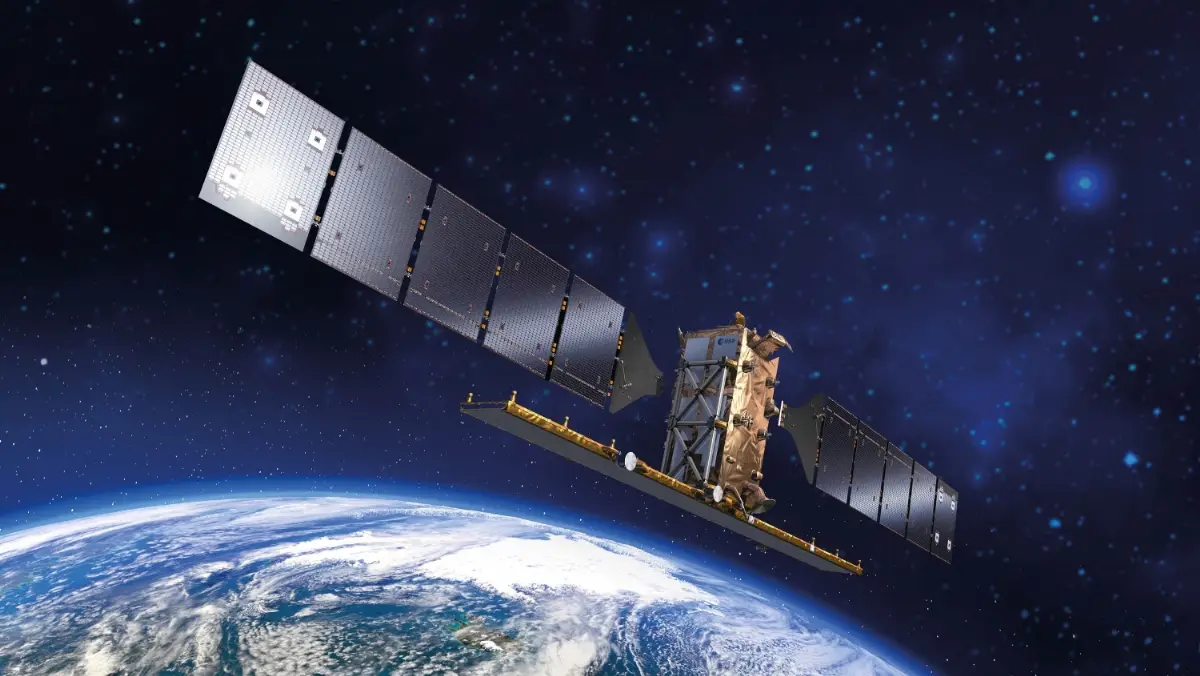
Thales Alenia Space: Sentinel-1D ready for launch in November
It is Copernicus environmental monitoring satellite

On November 4 at 6:03 PM local time in Kourou (10:03 PM CET), the Sentinel-1D satellite will lift off from Europe’s Spaceport in French Guiana aboard an Ariane 6 rocket operated by Arianespace.
Built by Thales Alenia Space (TAS) as prime contractor on behalf of the European Space Agency (ESA), Sentinel-1D is the latest bird to date in the Copernicus constellation.
With this, the Sentinel-1 family is now complete. This satellite represents the final addition to the first Copernicus constellation, ensuring continuity and enhanced capability for the missions already in orbit and extending system operations for the next seven years and beyond.
It is part of Copernicus, the European Union’s Earth observation program. Copernicus is managed by the European Commission and funded by the EU, with additional contributions from ESA (European Space Agency).
Sentinel-1D: a technological step forward in Earth Observation
The satellite captures images of Earth’s surface — day and night, in all weathers — for a wide range of applications to help protect our planet.
Sentinel-1D, like Sentinel-1C, carries an Automatic Identification System (AIS) payload to enhance maritime safety — improving traffic management, preventing collisions and monitoring vessels in sensitive areas.
It also introduces a world-first: a patented mechanism that separates the radar antenna from the spacecraft bus during end-of-life reentry, helping reduce orbital debris.
Like the other satellites in the Sentinel-1 family, Sentinel-1D is based on the PRIMA platform, developed by TAS for the Italian Space Agency (ASI). It is equipped with a C-band SAR radar provided by Airbus Defence and Space.
The company also supplies the transmitter/receiver modules (T/R), front-end electronics, onboard computer, and data handling and transmission subsystems.
Weighing 2.184 tons, Sentinel-1D will be placed in low Earth orbit at an altitude of 700 km, flying in formation with Sentinel-1C to ensure optimal coverage and shorter revisit cycles for monitored areas.
Leonardo contributed to Sentinel-1C and -1D satellites providing the attitude sensors (Autonomous Star Tracker) and power units for the radar, ensuring continuous availability of images.
Europe’s Sentinels for Planet Protection
Copernicus is the world’s most ambitious Earth observation program, led by the European Commission with the support of ESA.
With a fleet of 12 Sentinel satellite families, Copernicus monitors the Earth’s surface, marine environment, climate change, air quality, and food security. It provides critical data for sustainable resource management and natural disaster prevention.
Thales Alenia Space is a major contributor to 11 of the Copernicus program’s 12 missions. Sentinel-1 monitors land and sea in all weathers, day and night, thanks to its radar capabilities. Sentinel-2 and -3 acquire high-resolution optical imagery over land and coastal waters. Sentinel-4 and -5 are dedicated to meteorology and climatology missions. Sentinel-6 monitors the planet’s oceans.
As well as being prime contractor for the Sentinel-1 and -3 satellite families, Thales Alenia Space also supplied the Sentinel-2 image ground segment and helped build the imaging spectrometer on Sentinel-5P and the Poseidon-4 radar altimeter on Sentinel-6.
In 2020, TAS was awarded five contracts for the six new Copernicus Expansion missions, as prime contractor for the CIMR, ROSE-L and CHIME satellites and supplier of the CRISTAL and CO2M mission payloads.
These new satellites will measure human-induced atmospheric carbon dioxide, survey sea ice and snow cover, support new optimized services for sustainable farming and biodiversity, observe sea-surface temperature and salinity as well as sea ice density and strengthen land monitoring and emergency management services.
AVIONEWS - World Aeronautical Press Agency